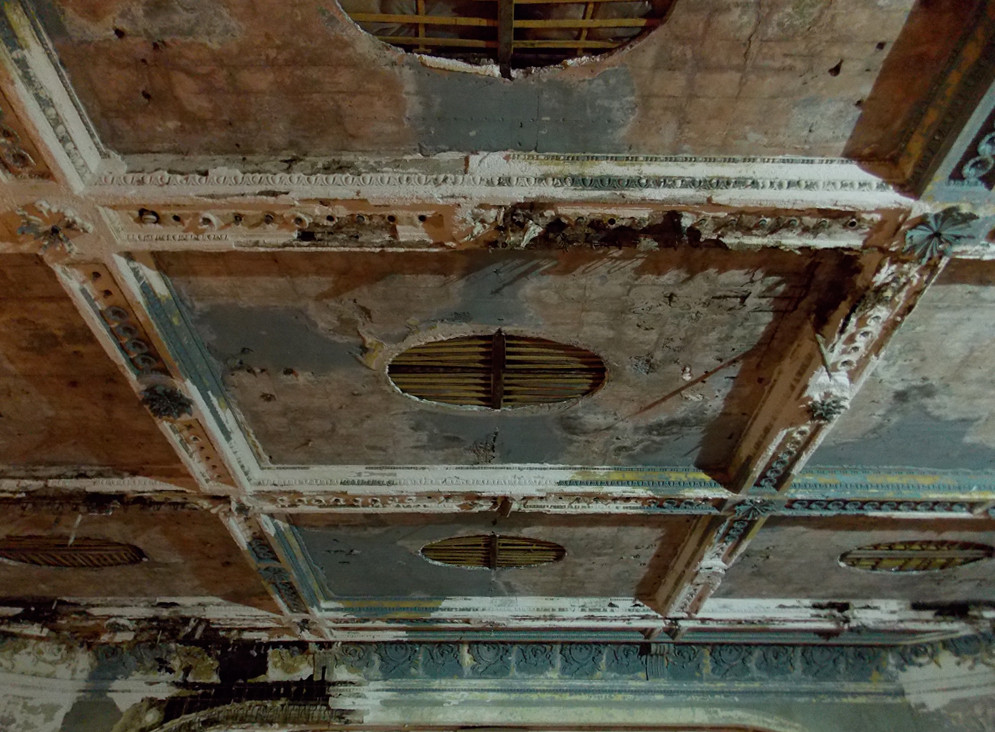EXPLORATIONS
The Philadelphia Metropolitan Opera House as seen in 1925.
Philadelphia Metropolitan Opera House
Built: 1908
Status: Partially Vacant / In Use
Explored: December 2012
It's safe to say that the extreme majority of Philadelphians have no idea that Oscar Hammerstein built a massive 4,000-seat opera house that still stands on North Broad. Partially vacant at the corner of Broad & Poplar streets, the Philadelphia Metropolitan Opera House is the ninth of 11 theaters built by Prussian-born Hammerstein in 1908.
Hammerstein himself has an interesting legacy. Born in 1847, he fled from current-day Poland to New York City where he found a job sweeping floors at a cigar factory. He quickly worked his way up the ladder and made a fortune by selling 80+ patents for cigar manufacturing machinery that he invented. Once he secured enough money to last him the rest of his life, he began investing heavily in his lifelong passion of music and theater.
His first theater, the Harlem Opera House on 125th Street in New York City, first opened its doors in 1889. Hammerstein would build seven more in Manhattan before hiring theater architect William H. McElfatrick to design the Philadelphia Opera House, with the intention to compete with the Philadelphia Academy of Music which still stands today at 240 South Broad Street.
Hammerstein was a risk-taker when it came to his opera houses and productions, and he gained a reputation for investing too much money into his ventures. He was quoted in a 1906 New York Times article titled "Hammerstein Tells how to Start an Opera Company" with the following:
"Financially, I never undertake anything without plenty of ammunition. I am never afraid of being ambushed in this account. I decided that my preliminary contracts should be drawn up provisionally upon my success in securing the great stars. I always contemplated an honorable retreat."
Original view from center stage. Photo © Temple University Libraries, Urban Archives.
With that being said, his ownership of the Philadelphia Metropolitan Opera House lasted just two years before he was forced to sell to the New York Metropolitan Opera in 1910. The New York Metropolitan Opera Company used the space until 1920 before shifting the bulk of their productions back to the Philadelphia Academy of Music.
The Philadelphia Metropolitan Opera House was used by a myriad of opera companies until a sports promoter purchased the space and repurposed the stage and orchestra pit with a basketball court and boxing ring in the late 1930s. As the neighborhood began to decline, the opera house slowly fell into disrepair and faced demolition before Reverend Mark Hatcher and his church purchased the building for $225,000 in 1998.
Converting the Philadelphia Metropolitan Opera House into a basketball court, 1939. Photo © Temple University Libraries, Urban Archives.
The Philadelphia Metropolitan Opera House is yet another example of Philadelphia history in neglect. As the neighborhood is beginning to show signs of life, the opera house might have renewed potential for restoration, thanks to its recent purchase by developer Eric Blumenfeld.
As you look at my photos below, keep in mind that the blue tarp not only acts as a shield to catch any pieces that might crumble, but it also acts the ceiling for its current occupant, Holy Ghost Headquarters. Nobody knows what the future holds for this building, but for now it appears to be in safe hands with Reverend Hatcher.
All photos © Zach Patten unless otherwise noted.











